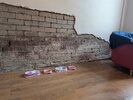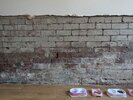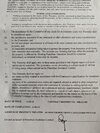- Joined
- 2 Mar 2017
- Messages
- 29
- Reaction score
- 3
- Country

Hi,
I have a failed DPC it was installed 10 years ago and has a guarantee of 20 years. I had the contractor out back in April who said it was leaks in the roof that had caused the damp. The house is inner terrace and has solid walls. I did have some flashing replaced on the chimney but still not even sure if this was actually an issue as I was trying to resolve the damp and just told the roofer something up there was letting water in.
Anyways I removed the plaster of the walls and have been letting it dry out since. Today I've realised the DPC is really high up and the DPC is there to stop the moisture getting any higher so obviously it can get quite high on my wall as the DPC is so high! The neighbours house is slightly higher than mine I mean by a few cm's. I've read on the building regulations website that the min required DPC is 15cm from ground but there's nothing stating the maximum height. Surely it's common sense that the damp can rise to the height of the course so the higher you put it the moisture is going to rise up to it. I obviously had the DPC installed due to the house been full of damp so it was all stripped back to brick. I'm considering taking action against the company and asking them to rectify at their cost.
Just wondering if anyone agrees with that the course has been installed too high and I'll have a leg to stand on. I'm obviously not a tradesperson and don't have any knowledge other than my common sense!
If I was to do this how would I go about proving it was too high?
Thanks
I have a failed DPC it was installed 10 years ago and has a guarantee of 20 years. I had the contractor out back in April who said it was leaks in the roof that had caused the damp. The house is inner terrace and has solid walls. I did have some flashing replaced on the chimney but still not even sure if this was actually an issue as I was trying to resolve the damp and just told the roofer something up there was letting water in.
Anyways I removed the plaster of the walls and have been letting it dry out since. Today I've realised the DPC is really high up and the DPC is there to stop the moisture getting any higher so obviously it can get quite high on my wall as the DPC is so high! The neighbours house is slightly higher than mine I mean by a few cm's. I've read on the building regulations website that the min required DPC is 15cm from ground but there's nothing stating the maximum height. Surely it's common sense that the damp can rise to the height of the course so the higher you put it the moisture is going to rise up to it. I obviously had the DPC installed due to the house been full of damp so it was all stripped back to brick. I'm considering taking action against the company and asking them to rectify at their cost.
Just wondering if anyone agrees with that the course has been installed too high and I'll have a leg to stand on. I'm obviously not a tradesperson and don't have any knowledge other than my common sense!
If I was to do this how would I go about proving it was too high?
Thanks








